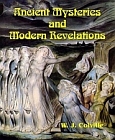
Is The Great Pyramid of Gizeh A Metrological Monument?

Description
The Great Pyramid of Gizeh
A Metrological Monument?
By
Sir James Y. Simpson
All authors, from the Father of History downwards, have generally agreed in considering the pyramids of Egypt as magnificent and regal sepulchres; and the sarcophagi, etc., of the dead have been found in them when first opened for the purposes of plunder or curiosity.
**************
Excerpt:
The pyramidal sepulchral mounds on the banks of the Boyne were opened and rifled in the ninth century by the invading Dane, as told in different old Irish annals; and the Pyramids of Gizeh, etc., were reputedly broken into and harried in the same century by the Arabian Caliph, Al Mamoon,-the entrances and galleries blocked up by stones being forced and turned, and in some parts the solid masonry perforated.
The largest of the Pyramids of Gizeh-or "the Great Pyramid," as it is generally termed-is now totally deprived of the external polished limestone coating which covered it at the time of Herodotus's visit, some twenty-two centuries ago; and "now" (writes Mr. Smyth) "is so injured as to be, in the eyes of some passing travellers, little better than a heap of stones." But all the internal built core of the magnificent structure remains, and contains in its interior (besides a rock chamber below) two higher built chambers or crypts above-the so-called King's Chamber and Queen's chamber-with galleries and apartments leading to them.
The walls of these galleries and upper chambers are built with granite and limestone masonry of a highly-finished character. This, the largest and most gigantic of the many pyramids of Egypt, had been calculated by Major Forlong (Asso. Inst. C. Engrs.), as a structure which in the East would cost about £1,000,000.
Over India, and the East generally, enormous sums had often been expended on royal sepulchres. The Taj Mahal of Agra, built by the Emperor Shah Jahan for his favourite queen, cost perhaps double or triple this sum; and yet it formed only a portion of an intended larger mausoleum which he expected to rear for himself. The great Pyramid contains in its interior, and directly over the King's Chamber, five entresols or "chambers of construction," as they have been termed, intended apparently to take off the enormous weight of masonry from the cross stones forming the roof of the King's Chamber itself.
These entresols are chambers, small and unpolished, and never intended to be opened. But in two or three of them, broken into by Colonel H. Vyse, a most interesting discovery was made about thirty years ago. The surfaces of some of the stones were found painted over in red ochre or paint, with rudish hieroglyphics-being, as first shown by Mr. Birch, quarry marks, written on the stones 4000 years ago, and hence, perhaps, forming the oldest preserved writing in the world.
84 pages - 5½ x 8½ softcover - Print size, 12 point font















